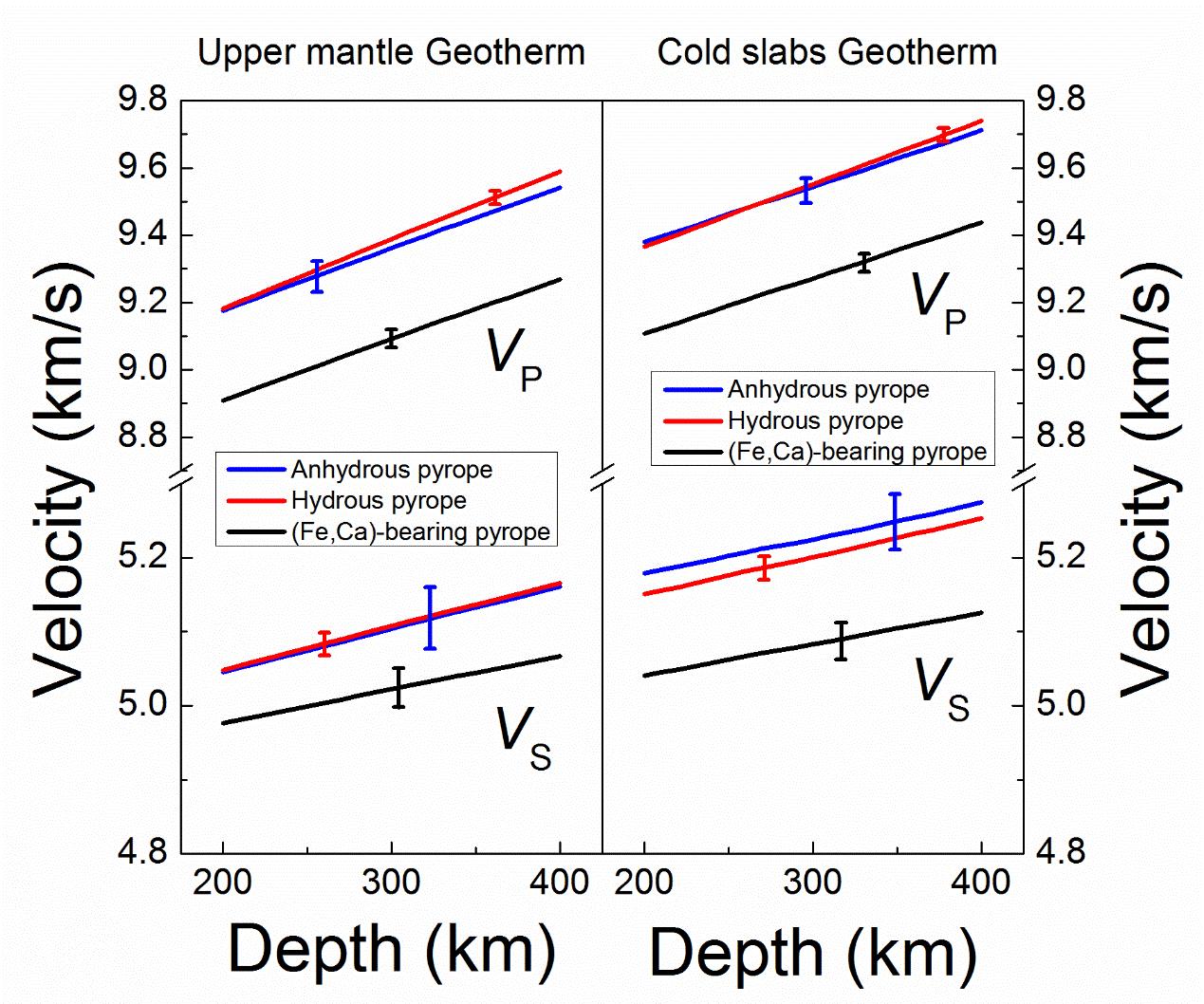Silicate garnet is an important constituent in the Earth’s upper mantle and transition zone. Although most natural garnets are complex solid solutions, the most significant component of mantle garnets is its Mg end-member pyrope.
Pyrope is not only an important mantle mineral, but also a well-known hydrous-bearing nominally anhydrous minerals (NAMs) phase in the upper mantle. Thus, accurate knowledge about the elastic property of hydrous pyrope is critical for deducing seismic velocities and density profiles and further constructing reliable mantle mineralogy models.
Prof. FAN Dawei (First Author) from Prof. ZHOU Wenge’s group at the Institute of Geochemistry, Chinese Academy of Sciences (IGCAS), in collaboration with Dr. LU Chang from the University of Texas at Austin, U.S.A., and Dr. Sergey N. Tkachev and Dr. Vitali B. Prakapenka from the University of Chicago, U.S.A., explored the sound velocity and density measurements on hydrous pyrope with ~900 ppmw H2O using in situ Brillouin light spectroscopy (BLS) and synchrotron X-ray diffraction in the diamond-anvil cell.
By obtaining the full set of single-crystal elastic moduli of hydrous pyrope at high pressure-temperature (P-T) conditions, the scientists found that all of the elastic moduli increased almost linearly with the increasing pressure at room temperature, and decreased linearly with the increasing temperature at ambient pressure.
Compared to anhydrous pyrope, the presence of ~900 ppmw H2O in pyrope didn’t significantly affect the aggregate adiabatic bulk and shear moduli within their uncertainties.
An addition of ~900 ppmw H2O in pyrope slightly increased the pressure derivatives of the bulk modulus, but had a negligible effect on the pressure derivatives of the shear modulus within their uncertainties. Meanwhile, the temperature derivatives of the bulk and shear moduli at ambient pressure were similar to those of anhydrous pyrope in previous BLS studies within their uncertainties.
The scientists also investigated the effects of hydrogen on the elastic moduli, sound velocities, and elastic anisotropies of pyrope. The modeling results indicated that hydrous pyrope remained almost elastically isotropic at relevant high P-T conditions.
Furthermore, the seismic velocities (Vp and Vs) and the Vp/Vs ratio of hydrous pyrope along the upper mantle geotherm and a cold subducted slabs geotherm were evaluated. The results showed that hydrogen also had no significant effect on the seismic velocities and the Vp/Vs ratio of pyrope at the upper mantle conditions.
The study, published in American Mineralogist, was supported by the National Natural Science Foundation of China, the Joint Research Fund in Huge Scientific Equipment under cooperative agreement between NSFC and CAS, the Chinese Academy of Sciences "Light of West China" Program, the Youth Innovation Promotion Association CAS, the China Postdoctoral Science Foundation.
 |
| Figure. Modeled velocities of pyrope garnets in the Earth’s upper mantle along the upper mantle geotherm and cold subducted slabs geotherm. (Image by IGCAS) |
Contact: FAN Dawei
Institute of Geochemistry, Chinese Academy of Science
E-mail: fandawei@vip.gyig.ac.cn
(By Prof. ZHOU Wenge’s group)